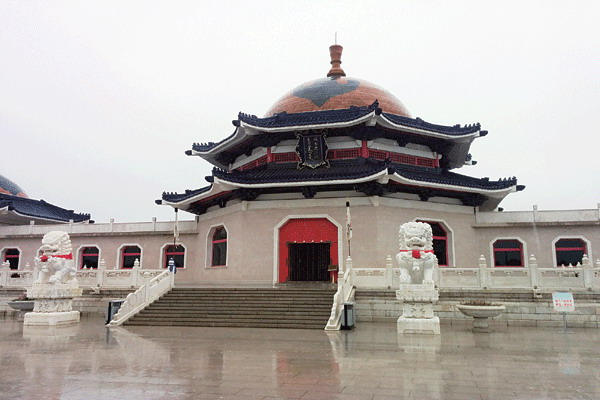 |
|
Genghis Khan's mausoleum in Ordos.[Photo by Matt Hodges/shanghai star]
|
Another colleague claimed to have seen a roaming wolf that same evening, but she played this off as a joke in the cold light of day. There aren't many wild wolves left in Inner Mongolia. They were almost hunted out of existence after the "cultural revolution" (1966-76), a period recorded in Jiang Rong's award-winning novelWolf Totem.
Our guide said he saw two adults and two cubs a couple of years ago close to the Mongolian border, which would have been about a five-hour drive north of where we were, "but they were in cages, used by local people as a kind of circus show."
The indigenous farmers of this remote northern region may be battle-hardened with tattooed chests, but they are just as likely to be herding sheep on motorbikes as on horseback.
Don't expect to see men in fur hats hunting timber wolves with golden eagles, either. Genghis Khan famously kept over 1,000 hunting birds, but you need to travel to the western part of Mongolia to see Kazakhs carrying on that tradition.
However, getting acquainted with fading Mongolian traditions while enjoying the Western-movie landscapes are two very compelling reasons to visit.
It is also fascinating to see how the old ways have married - often literally - into the customs of modern-day Chinese. Amazingly, everyone seems to get along.
Our itinerary took us on a zigzagging journey eastbound and down from Baotou, the region's most populous city, to Hohhot, and then north to one of many yurt resorts, or encampments, in Xilamuren, one of the better and more accessible grasslands in the region.
The roads were long and sometimes bumpy, so pack alka seltzer and make sure you have enough music/battery on your iPhone.
Baotou's name in Mongolian means "land rich in deer," which it once was. It is now better known for its large urban grassland, industrial chimney stacks and rare earth metals - those periodic elements that do god-knows-what to your smartphone.
The Bayan Obo mining district, which falls under the city's jurisdiction, ranks as the world's largest-known repository of these, or at least it did back in 2005.
Stops on our trip included Mei Li Geng, where we spent an hour scaling vast boulders and mountain streams while gazing at erotically shaped rock formations; Genghis Khan's mausoleum, which you will either revel in or revile as a tourist trap; a prominent lamasery; and the sand dunes of Xiangshawan Desert.
